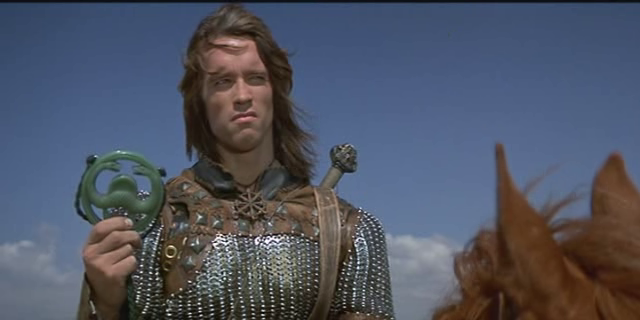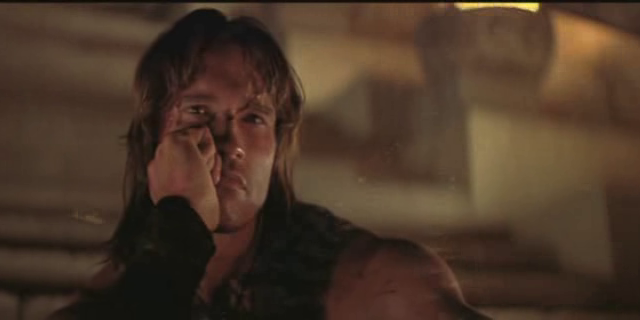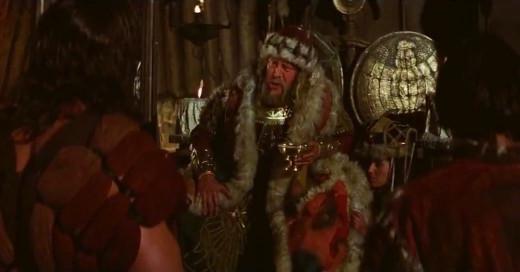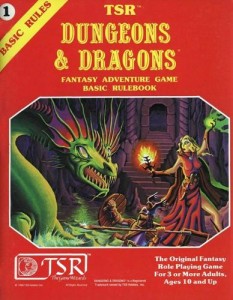Since I first discovered the actual Basic/Expert game almost exactly six years ago, I’ve taken out the Basic rules a couple of times for relatively short games, but never really got into any of the Expert material. I also did not make much use of the wandering monsters and morale mechanics and mostly ran it pretty “modern conventional”. And I certainly did not use the random treasure tables. When I started work on my next campaign, I made the choice to try to really understand all the rules as they are written and follow the procedures as they are presented by Moldvay and Cook, to see how that plays out before I start making significant changes. It’s a game that is meant to be highly flexible and customizable, but it’s generally a bad idea to start making modifications to something before you understand what the default setup does.
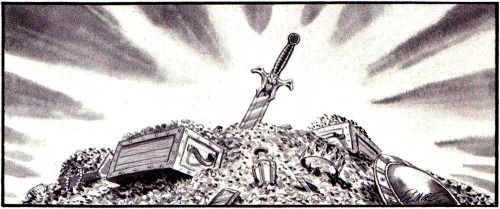 A line of thinking that I encountered in the wild over the years of listening to the words of the elders, is that the tables for wandering monsters and generating randomized treasures are the main reference for how you set up dungeons with appropriate challenges and corresponding amounts of rewards. I’ve seen discussions about how some magic items are more valuable in Basic or AD&D because of the greatly different chances of them appearing in treasure hoards, and how this is indicative of the original assumptions how the games would be played and why some classes have different advantages with the rarity of those items in mind. I’ve long had my doubts about that and suspecting that that very little actual thought went into the creation of these tables and the resulting chances for certain encounters and rewards. And when you look at how the tables are constructed, this really seems very likely. On the wandering monsters tables, there are 20 entries, each with the same 1 in 20 chance. On the same table, you have 1 HD creatures appearing in numbers of 1-8, and 2 HD creatures in numbers of 2-12. This is not adjusted to be roughly equal in challenge on average. The magic item tables in Basic are just alphabetical lists numbered from 1 up, all with the same chances. The Expert tables are a bit more elaborate using a d100, but in the end all potions have either a 3% or 4% chance. I think these were all just eyeballed without any thought to intended play or adjustments for balance.
A line of thinking that I encountered in the wild over the years of listening to the words of the elders, is that the tables for wandering monsters and generating randomized treasures are the main reference for how you set up dungeons with appropriate challenges and corresponding amounts of rewards. I’ve seen discussions about how some magic items are more valuable in Basic or AD&D because of the greatly different chances of them appearing in treasure hoards, and how this is indicative of the original assumptions how the games would be played and why some classes have different advantages with the rarity of those items in mind. I’ve long had my doubts about that and suspecting that that very little actual thought went into the creation of these tables and the resulting chances for certain encounters and rewards. And when you look at how the tables are constructed, this really seems very likely. On the wandering monsters tables, there are 20 entries, each with the same 1 in 20 chance. On the same table, you have 1 HD creatures appearing in numbers of 1-8, and 2 HD creatures in numbers of 2-12. This is not adjusted to be roughly equal in challenge on average. The magic item tables in Basic are just alphabetical lists numbered from 1 up, all with the same chances. The Expert tables are a bit more elaborate using a d100, but in the end all potions have either a 3% or 4% chance. I think these were all just eyeballed without any thought to intended play or adjustments for balance.
But I still was quite surprised when I scoured the texts again, and discovered what exactly Moldvay wrote on these topics.
Treasures are determined randomly or chosen by the DM. The DM should always determine the contents of a large treasure hoard before play in order to determine how best to hide and protect the treasure from theft, and if magic items are present.
The DM may choose treasures instead of rolling for them randomly, or may choose a result if rolls give too much or too little treasure. The choices should be made carefully, since most of the experience the characters will get will be from treasure (usually 3/4 or more). It will often be easier for the DM to decide how much experience to give out (considering the size and levels of experience in the party) and place the treasures to give this result.
The method advocated here is to start with the total amount of XP that characters will be able to make in the dungeon or dungeon level as a choice by the GM and work backwards from there. One quarter of that amount should be in the form of enemy encounters, and the remaining three quarters in the form of treasures. Or to get the same effect, just populate the dungeon with whatever monsters you want to use, then calculate the XP for defeating all of them, and multiply that result by 3 to get the appropriate value of the treasures you should distribute among the creature lairs. The treasure tables seem more to be intended to be used when you don’t really have an idea for what treasure you might want to put in the dungeon and to give you some suggestions. But since the tables don’t know how many of the creature lairs will be of creatures that have treasure hoards or not, this can’t get you that rough 3 to 1 ratio for XP except by pure accident.
For my setting, I have a lot of custom creatures (though most of them are plain reskins), and I had been thinking about how I would assign treasure types to all of them. But I don’t think I really should bother with that. I don’t believe the treasure tables and treasure types have much logic behind them I could figure out and apply to my own creatures. It’s always only been eyeballed to look good enough.
Another small detail that I noticed is that something that I considered a new house rule of mine is actually tucked away in the text already.
Treasure is normally found in the lairs of monsters, but may be paid to a character by a high level NPC for performing a mission or job.
The basic formula of “you’re treasure hunters, so go hunt treasure for the sake of hunting treasure” never really worked for me as a basis for compelling adventures. I thought that carrying a rescued prisoner back to town for a 500 gp reward is mechanically the same as carrying a big gem from the dungeon that is worth 500 gp, so players could get the same amount of XP for this. Turns out this was already suggested 40 years ago.

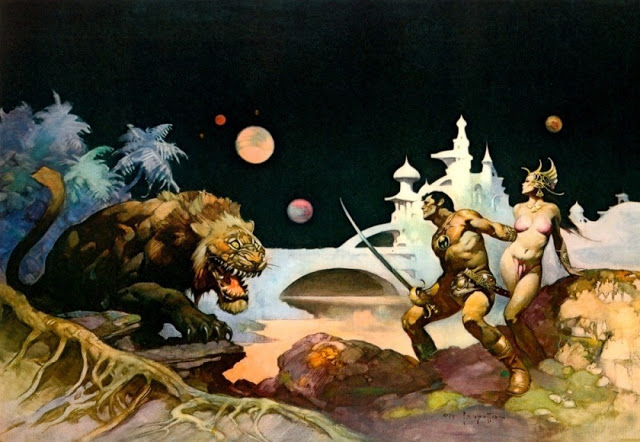 You know what the world really does not need? Another B/X retroclone. Well, I think it kid of does, but I know that nobody wants to see it. So instead, I am simply going to present my own adjustment to Basic Fantasy. BF has always ranked among my favorite retroclones of choice because it’s very close to the original B/X by Moldvay and Cook while at the same time using the sane rational system to attack rolls and armor class. I know the later is trivial to slap on any iteration of D&D, but I am petty about my hate for a resolution mechanic that is objectively bad and done wrong, so that’s counting a lot to me. BF is also very cleanly laid out and easy to read, and the whole thing is free so you can just hand out pdf copies to anyone you like.
You know what the world really does not need? Another B/X retroclone. Well, I think it kid of does, but I know that nobody wants to see it. So instead, I am simply going to present my own adjustment to Basic Fantasy. BF has always ranked among my favorite retroclones of choice because it’s very close to the original B/X by Moldvay and Cook while at the same time using the sane rational system to attack rolls and armor class. I know the later is trivial to slap on any iteration of D&D, but I am petty about my hate for a resolution mechanic that is objectively bad and done wrong, so that’s counting a lot to me. BF is also very cleanly laid out and easy to read, and the whole thing is free so you can just hand out pdf copies to anyone you like.
